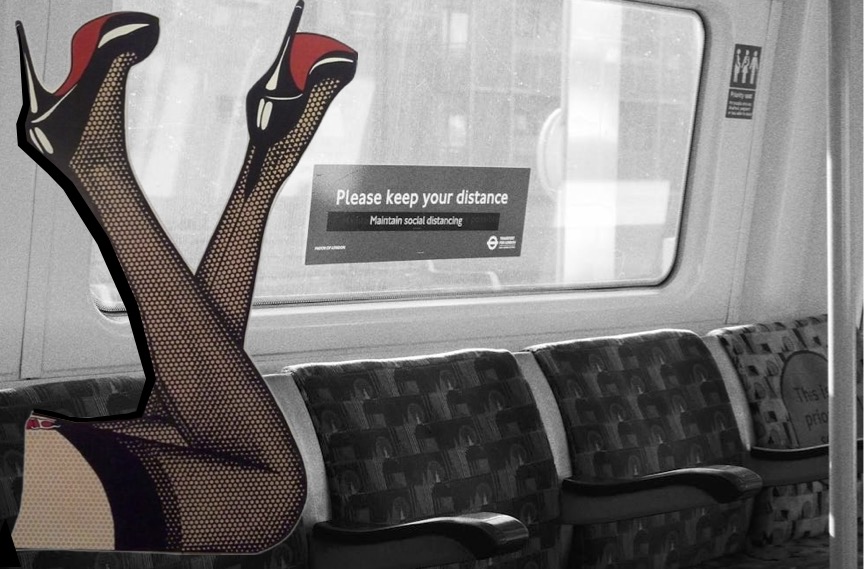Most people’s first time seeing a naked body like mine is a porn video. One characteristic unique to our time is people’s instantaneous access to explicit pornographic content at the swipe of a finger — sometimes illegally created or otherwise violent and deeply fetishistic. I found that the representation of my identity not only in popular media but in pornography was seeping into my everyday life.
In 2024, the adult film industry was estimated to make over $23 billion in revenue in North America. This revenue exceeds HBO, Netflix, Bollywood, Hollywood, MLB, the NHL, the NBA and the NFL. Transgender people make up 1% of the U.S. population. Less than half of the population personally knows a trans person. The “transgender” porn category was the seventh most viewed of 2024, which is a step down from last year when it was the sixth. From this, I can conclude that the most popular representation of my identity is in porn videos on the internet.
One of the reasons why violence against trans women is so pervasive is that we have ceased to exist in the eyes of the public as multidimensional human beings with wants, needs and desires. Trans people are four times more likely to experience a violent crime than cisgender people. Ever since I was a little girl, the only representation I saw of myself in the media was small glimpses of sex workers as side characters and bit parts. 20% of transgender adults have participated in sex work of some kind. 72% of those transgender sex workers have experienced violence or sexual assault.
Our history of representation in the media is tattered with mischaracterizations. The 2015-2016 GLAAD “Where Are We On TV” report included a call to Hollywood to end this harmful trope in television and film. GLAAD claimed that “portraying the majority of trans women as sex workers, especially with no context as to why trans women may be forced into sex work including widespread employment discrimination … ” must be put to an end.
One of the reasons why violence against trans women is so pervasive is that we have ceased to exist in the eyes of the public as multidimensional human beings with wants, needs and desires.
In the early 2000s, problematic transgender representations began to show up on television. Trans sex worker characters appeared in glimpses and as a fringe concept. Shows like “Sex and the City” employed trans women and some drag queens to act as the butt of a joke in the season finale of season two titled “Cock-A-Doodle-Doo.” These actors were hired to play sex workers in the Meatpacking District on 14th Street, an area known to have transgender women for solicitation due to pervasive employment discrimination. The show does not address the employment discrimination faced by trans people that results in this line of work being the only option for transgender characters; it uses their forced occupation as a punchline.
In 2013, Jared Leto played Rayon, an HIV-positive trans woman, in “Dallas Buyers Club,” and won the Academy Award for Best Supporting Actor in 2014. It is impressive to see men like Jared Leto, Eddie Redmayne, Cillian Murphy, Matt Bomer, John Lithgow, Jaye Davidson and Chris Sarandon drop 20 pounds, don drag and do vocal feminization training in a matter of weeks. But why can you only attempt to empathize with trans people if a cisgender person is representing us? Is our experience truly so anomalous that there are no talented transgender actors to play these roles? Are trans women men in wigs to you?
I was first solicited for prostitution when I was 19. I was alone. I was on my way home from Trans Pecos, a music venue in Queens. While I dressed appropriately for the event, the outfit I was wearing on the subway was much more modest to avoid attention. Not that it should matter what I was wearing, but I had on stockings. Some guy came to me, and he told me he liked them. He sat next to me, and I froze. He put his hand on my thigh and simply asked “How much?”
I didn’t know what to do. I stayed silent, and he kept rambling. The only thing I could do was sit there hoping he would leave. Arriving at the next stop, I said, “this is me.” I rushed off into another car to get away from him.
Suppose one were to position sex work as an indelible moral evil that thrives off of exploitation. In that case, I counter, asking which industry did not profit from exploitation under capitalism. The shoes you are wearing, the computer I am typing this on, and the food we eat today all can be traced back to someone, somewhere, being exploited.
If you objectify the trans female body from the moment you conceive of it, then the trans female life seems inhuman and grounds for violent action. People have a hard time finding us respectable when images of promiscuity shroud our identity. There is no question that the majority of anti-trans rhetoric comes from a long history of misrepresentation.
Currently, there is a legislative attack on transgender people. In 2025, 490 bills targeting 1% of the population are being considered in the United States. Drag bans are surfacing as a direct attempt to criminalize being trans in public. President Donald Trump introduced a federal policy to ban gender-affirming care for those under nineteen. While courts have blocked this action in some states, states with limited protection for trans people now have federal policy backing them.
When I get down about this, I remember that Marsha P. Johnson and Silvia Rivera were sex workers, two of the pillars of the Gay Liberation Movement, and the reason why I can write this column.
The LGBTQ+ panic defense is still a viable legal strategy in 33 states. One could justify violence against LGBTQ+ people after or during sex by weaponizing the victim’s sexual orientation or gender identity. Since 2013, 29% of lethal violence against trans people has been perpetrated by an intimate partner. Violence against trans women can be justified in court by the “temporary insanity” caused by sex with us. It is hard for trans women to testify about disclosing their identity to their intimate partner from the grave.
As the United States government makes strides to eliminate bodily autonomy, we need to tell trans stories. People need to realize that we are more than sex workers and promiscuous girls and even if we were, there is nothing wrong with that. It can be hard to reconcile the years of systematic failure that has led to my body constantly being perceived as something to be bought and sold. Ideally, I would not be seen as something a male actor could try on for critical acclaim or a sexual fantasy as some “magical fairy girl with a dick.”
I have been solicited for prostitution because that is the dominant media narrative surrounding my identity. When I get down about this, I remember that Marsha P. Johnson and Silvia Rivera were sex workers, two of the pillars of the Gay Liberation Movement, and the reason why I can write this column. They were sex workers who fought for our right to exist. Without sex workers, we would not be here.
I am currently producing and acting in a play I wrote called “Thoughts On Girlcock.” I wanted to test if there was a way I could reframe this narrative. The play follows Destiny Starr, a transgender porn star on a meteoric rise to fame, or Kylie, a twenty-one-year-old trans girl as she navigates her double life, dating Evan who has a Christian, conservative mom who wants to meet her. Come check it out in the Veronica Lally Kehoe Studio Theater on the 26, 27 or 28 of February!


